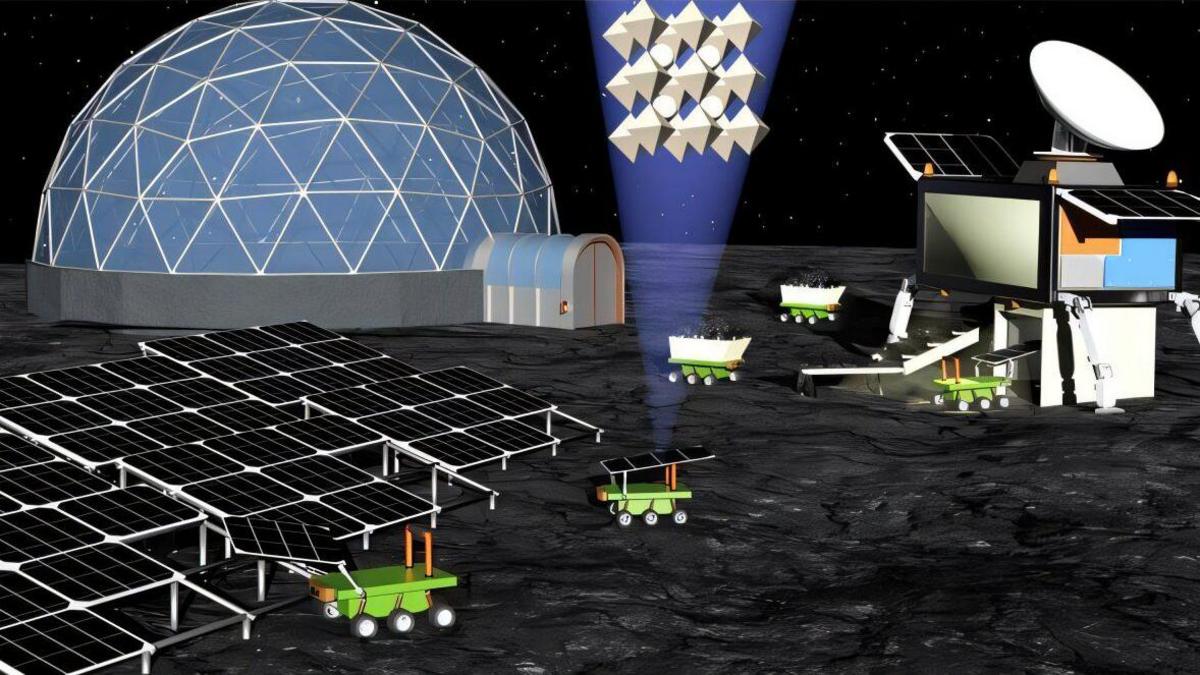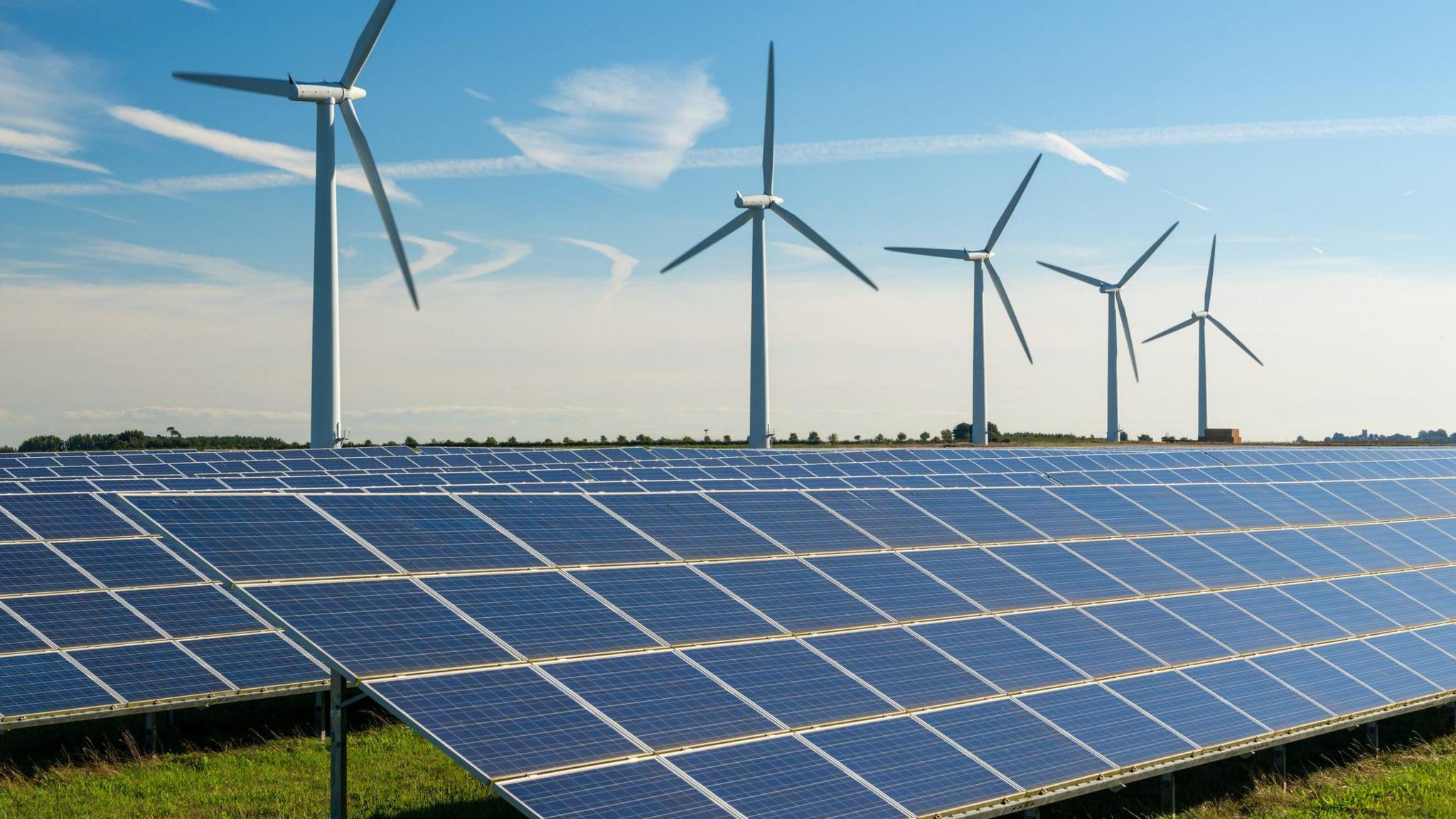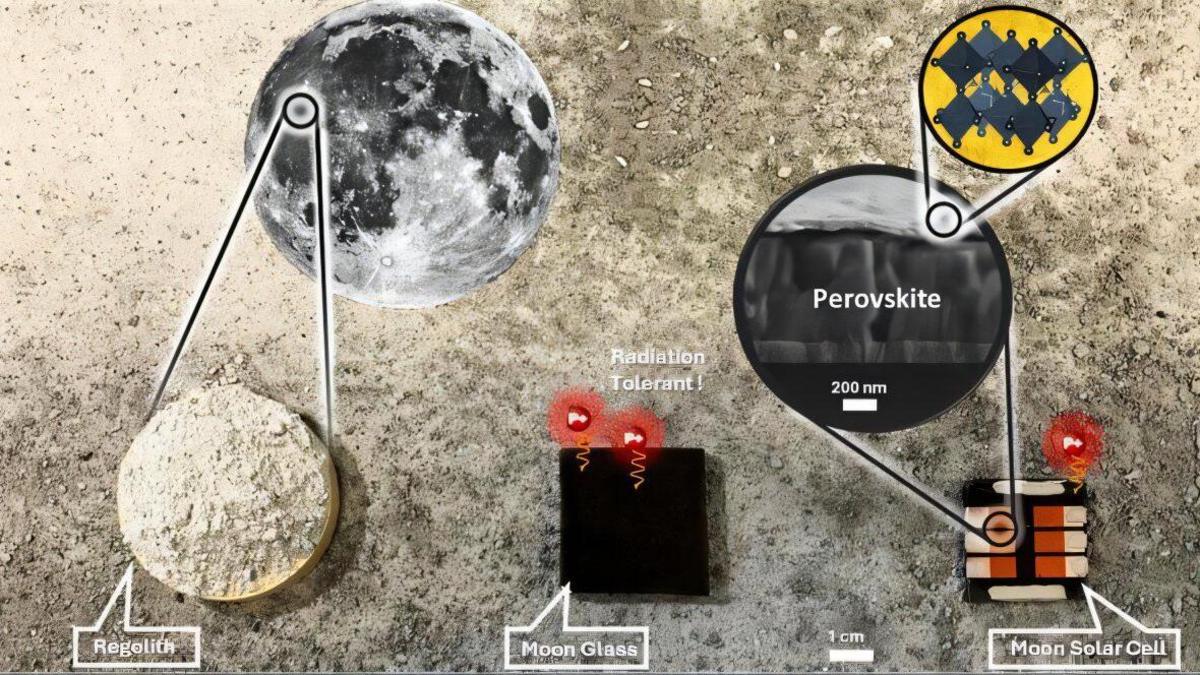Astronauts could make 'moonglass' solar panels from lunar dust

- Published
Could moonbases be powered by solar panels made from melted moon dust?
That's what a team of scientists led by Felix Lang of the University of Potsdam, in Germany, have been trying to discover.
They have made a 'moonglass' solar panel prototype. A prototype is an early version of a design which you can use to test out what works and what doesn't work.
Their hope is that astronauts living on the Moon could make moonglass solar panels to provide them with power.
How to build on the Moon
- Published5 December 2022
Plants on the Moon? You'd better BeLEAF it!
- Published29 March 2024
Nasa picks possible landing sites for Moon mission
- Published4 November 2024
Why not use solar panels instead?

'Why not make solar panels on Earth and put them on board a rocket to the Moon?' - we hear you ask!
Well, that is what astronauts and engineers have been doing over the last few years.
"The solar cells used in space now are amazing, reaching efficiencies of 30% to even 40%, but that efficiency comes with a price," says researcher Felix Lang.
But solar panels are quite heavy, and transporting them to space increases the weight of the rocket carrying them, meaning it needs more power to blast off, which costs more money.
"They are very expensive and are relatively heavy because they use glass or thick foil as cover. It's hard to justify lifting all these cells into space." said Felix Lang.
So Felix's team are looking into the possibility of making solar panels on the Moon using materials available on the lunar surface.
This change could reduce a spacecraft's launch weight by 99.4%, cut 99% of transport costs, and make long-term living on lunar bases more possible.
What is moonglass, and how have scientists made it?

The researchers shared what materials they used to make the moonglass solar panels
As part of their research the scientists made a synthetic - or man-made - version of moon dust and melted it down to make moonglass.
They then mixed in a crystal material called perovskite - which is able to cheaply, easily and efficiently turn sunlight into electricity.
The scientists say this could be done by astronauts on the Moon, using concentrated sunlight to melt the materials together.
When the team put their prototype panels to the test, they zapped them with space-grade radiation, and found that the moonglass versions performed better than the Earth-made ones.
This is because standard glass slowly turns brown in space, blocking sunlight and meaning it doesn't work as well.
However, moonglass has a natural brown tint, which prevents it from further darkening, and makes the solar panels more resistant to radiation.

Could future moon bases be powered by moonglass solar panels?
The scientists still have a few unanswered questions from their research, including how the Moon's environment would affect the making process.
Things like the Moon's gravity being different to on Earth, and whether the Moon's changing temperatures could affect the process.
The team hopes that one day they can launch a small experiment to the moon to test out their solar panels in real lunar conditions.
"From extracting water for fuel to building houses with lunar bricks, scientists have been finding ways to use moon dust," said lead researcher Felix Lang.
"Now, we can turn it into solar cells too, possibly providing the energy a future moon city will need."
